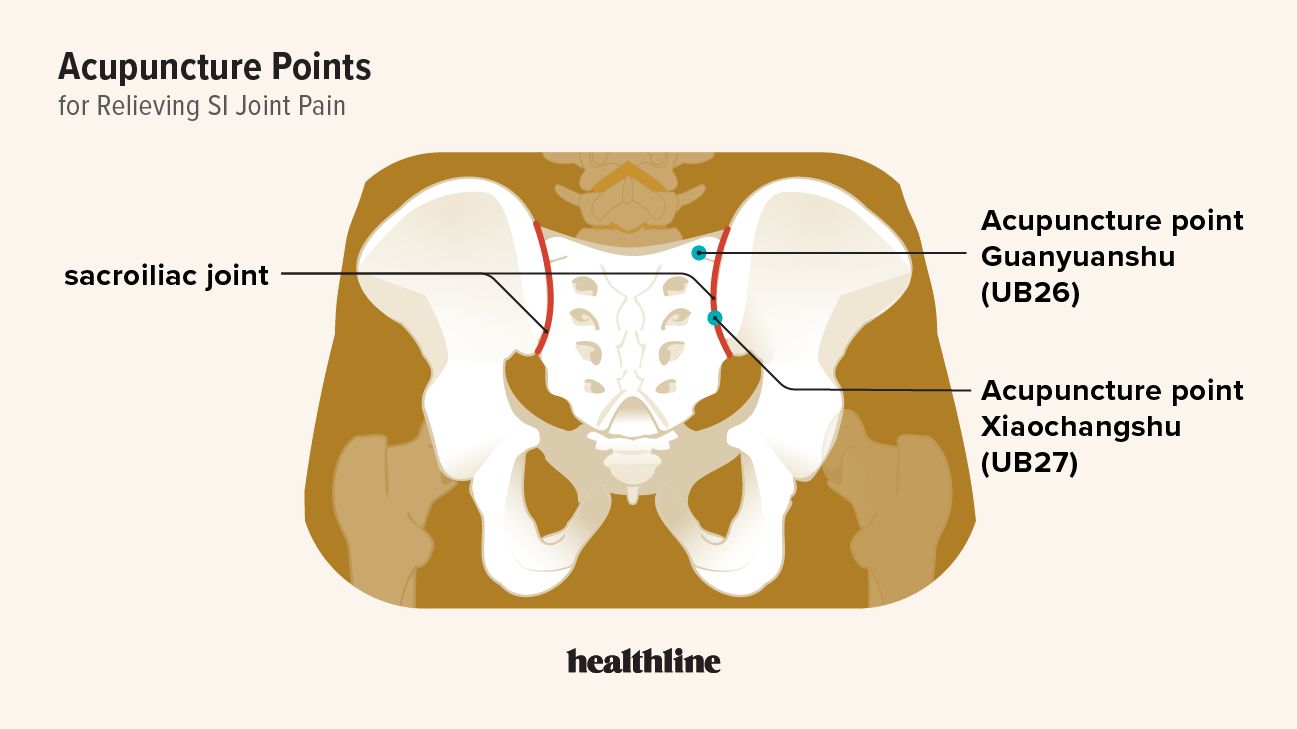Acupuncture is a complementary therapy often used to treat different types of pain. This includes lower back pain that may be related to your sacroiliac (SI) joint.
The SI joint connects your sacrum (the base of your spine) to your pelvis. You have two SI joints, one on each side of your sacrum. They help provide stability and distribute force between your upper and lower body.
Sometimes, the SI joint can become inflamed. This condition is called sacroiliitis. Many factors can lead to sacroiliitis, including injury, arthritis, and pregnancy.
The most common symptom of sacroiliitis is lower back pain. Several treatments may help relieve SI joint pain due to sacroiliitis. Acupuncture is one of them. Keep reading to learn more.
What is acupuncture?
Acupuncture is a technique in which a practitioner inserts very thin needles into your skin at specific points along your body. Once the needles are placed, the practitioner may then manipulate them manually or apply a mild electrical current.
The origins of acupuncture are in traditional Chinese medicine. The practice aims to balance or unblock the flow of qi, a vital energy that’s believed to flow through the body.
Acupuncture is most widely used to treat different types of pain. It’s also been used as a part of treatment for other conditions like nausea, seasonal allergies, and asthma.

There’s limited data on acupuncture and SI joint pain specifically. A
More research has been done on acupuncture and lower back pain. In fact, guidance from the American College of Physicians recommends acupuncture as an initial, non-pharmacological treatment option for chronic lower back pain.
A 2019 analysis found that, compared with a placebo, acupuncture improved lower back pain immediately after treatment and at follow-up.
A
- gave more pain relief than having no treatment
- provided better pain relief than usual care, including things like massage and physical therapy
- led to no difference in pain reduction when compared with medications and transcutaneous electrical nerve stimulation (TENS)
You may be wondering what it’s like to receive acupuncture for SI joint pain.
A single session can take up to an hour, but it may also be shorter. How long you receive acupuncture and how often you have acupuncture sessions can vary.
A
How to find a qualified acupuncturist
Asking a doctor for a recommendation or getting a referral from a friend is a good way to find a qualified acupuncturist.
You can also search online for certified acupuncturists in your area.
Be sure to use a licensed acupuncturist (they should have the credentials “LAc” after their name). A licensed acupuncturist must pass the National Certification Commission for Acupuncture and Oriental Medicine (NCCAOM) exam or the NCCAOM program in the foundations of East Asian medicine, acupuncture, and biomedicine.
The optimal treatment for SI joint pain can depend on many factors. Treatment recommendations can be based on:
- how long you’ve had SI joint pain
- the severity of your pain and how it affects your daily life
- the cause of your SI joint pain
- how your SI joint pain has responded to other treatments
SI joint pain is typically treated conservatively at first. This may include:
- medications to ease pain and inflammation, such as nonsteroidal anti-inflammatory drugs (NSAIDs)
- physical therapy, which
can include exercises and stretches, massage, and manual manipulation - pelvic belts to help stabilize the joint
Generally speaking, more invasive treatments are recommended only when chronic SI joint pain hasn’t responded to other treatments. These can include:
- steroid injections to ease pain and inflammation
radiofrequency treatment , which uses an electrical current to reduce pain sensations- SI joint fusion, a type of surgery that connects the sacrum to the pelvis
Massage and bodywork may be used as a part of conservative management of SI joint pain. Along with acupuncture, these types of treatments are recommended as initial, non-pharmacologic therapies for low back pain.
The data on the effectiveness of these treatments is mixed, though. For example, while a small
Additionally, a
Additional larger studies need to be done before experts can reach any definitive conclusions.
Acupuncture may be used to ease SI joint pain due to sacroiliitis. SI joint pain is a major cause of lower back pain, and studies have generally found acupuncture to be effective at easing lower back pain.
Treatment options for SI joint pain can depend on the cause, severity, and duration. Initial treatment is generally conservative and may include interventions like physical therapy, NSAIDs, and complementary treatments like acupuncture.
